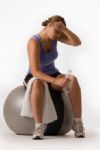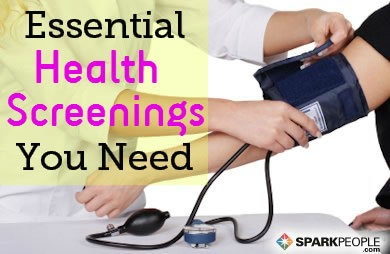|
The remedy for back pain used to be rest and more rest. But recent guidelines say that the key to beating back pain is in staying active. Here, how to treat and prevent an aching back. How to Treat Back PainThere's nothing like all-consuming back pain to make you want to become one with the couch. If you've been there, you know what we mean. If not, consider yourself lucky: It's pretty easy to push your back's intricately entwined bones, muscles, tendons, and ligaments out of their comfort zone. "We see a lot of women in their 20s and 30s coming in with back pain because they've returned to a sport out of condition or suddenly upped their exercise intensity," says Daveed Frazier, MD, an assistant clinical professor of orthopedic surgery at Columbia University College of Physicians and Surgeons in New York City. "Our bodies just aren't designed to absorb the abuse we give them."When pain strikes, your initial response might be to rest. "But even just a few days of lying idle can lead to deconditioning and further harm," says Roger Chou, MD, director of clinical guidelines development for the American Pain Society (APS). "Staying active helps keep the muscles and tendons loose and strong." In fact, the thinking about back pain has shifted so much that the APS and the American College of Physicians recently released new treatment guidelines. Read on for the latest in pain prevention. Your First Defense Against Back PainRule out red flags. In rare incidences, back pain is caused by an ailment such as a kidney infection or even cancer. If you suspect your ache might be a side effect of a medical issue, if you have a fever, or if you've been in an accident, call your doctor ASAP.Apply heat. A well-placed pack of frozen peas might reduce swelling or ease pain, but heat is a sure thing. Whether from a warm bath or a heating pad, it loosens strained muscles. Get up. "Staying in bed, given the accompanying muscle weakness and stiffness, does more harm than walking ever could," says Dr. Chou. As soon as you can, resume regular activities and light workouts, but keep strenuous exercise on hold. (That means no Spinning class, Miss I-Must-Not-Skip-the-Gym.) If movement is too painful (more than 5 on a scale of 0 to 10), lie on your back with a pillow under your knees for a few hours before trying again. Walk this way. Shuffling like the Tin Man may help you get from point A to point B faster, but those movements stiffen your already sore muscles. Instead, try walking with a long, slow, fluid gait, which releases muscle tension and lubricates joints. Get relief. While pain meds won't speed your healing, they may get you back on your feet faster. The first bottle to open is acetaminophen, says Dr. Chou. (It's virtually free of side effects.) If you don't have an ulcer and you think your ache is muscle-based, you can try an over-the-counter anti-inflammatory such as ibuprofen. For blinding pain, ask your doctor for something stronger, like a muscle relaxant. Wait it out. "Most people show significant improvement over the first seven days," says Dr. Chou. (By six weeks, back pain disappears for 90 percent of people.) If you're not even starting to feel better within a few weeks and treatments just aren't working, consider seeing a back specialist, such as an orthopedist, who can determine if you have the usual "nonspecific back pain" or something more complicated. Next: Get More Strength and Flexibility to Help Your Back Pain More great stories: Do you suffer from back pain? What helps you? |
Popular EntriesMore From SparkPeople
|














